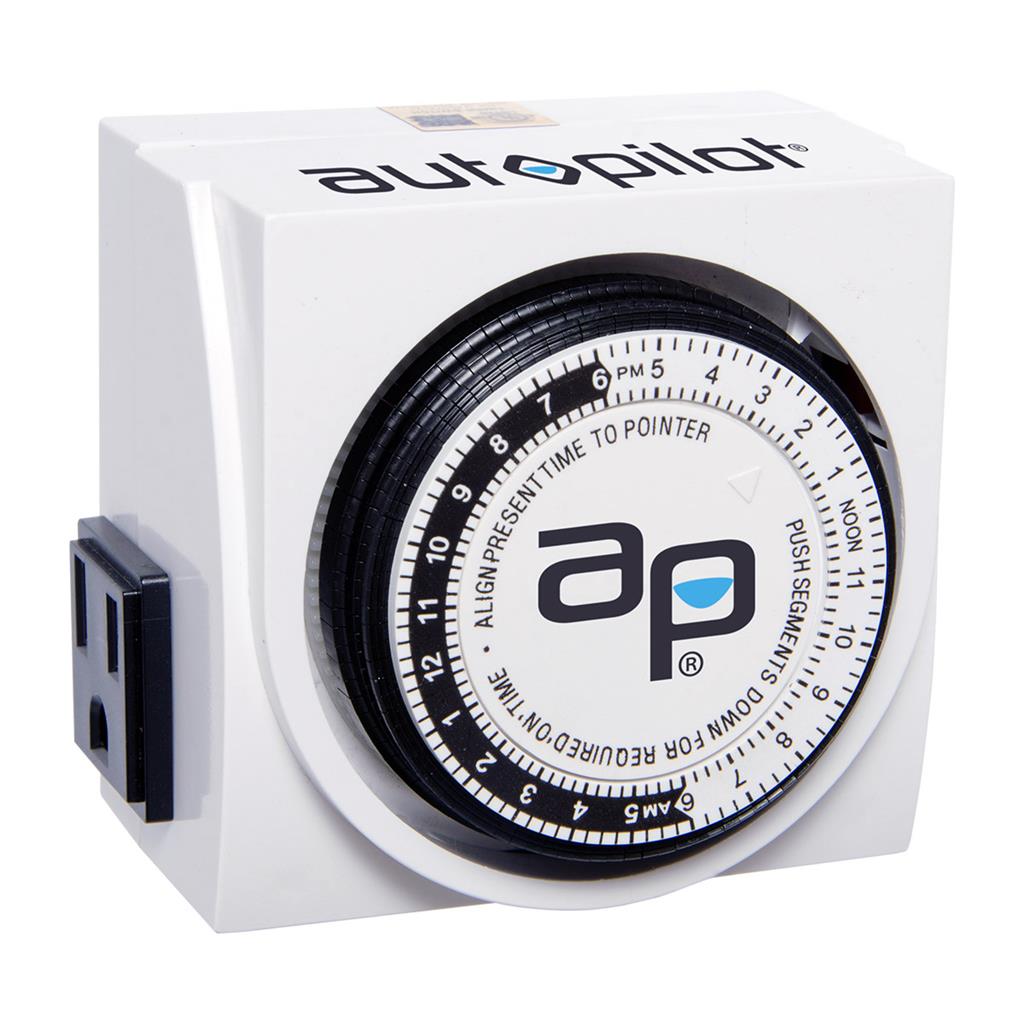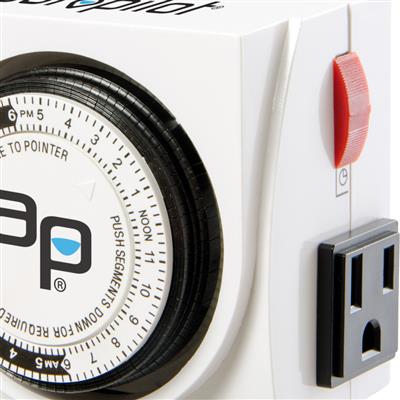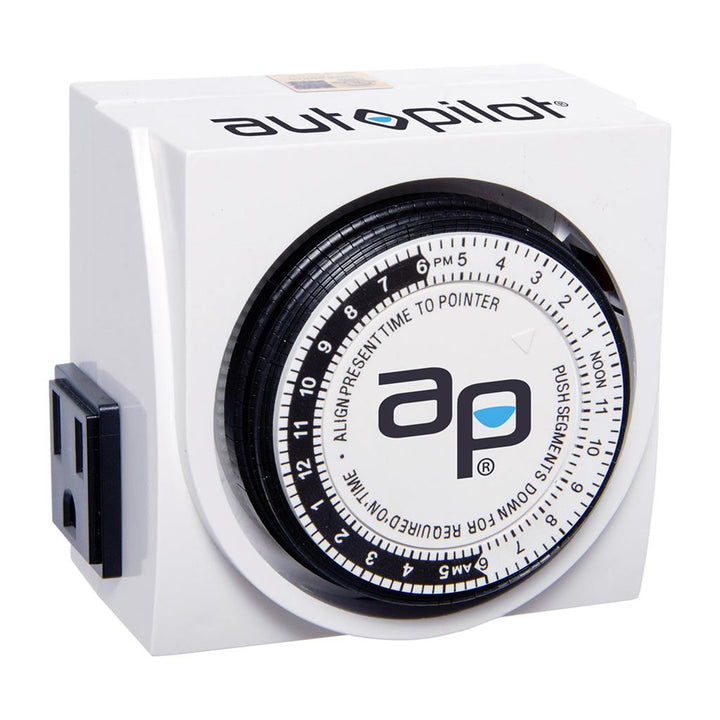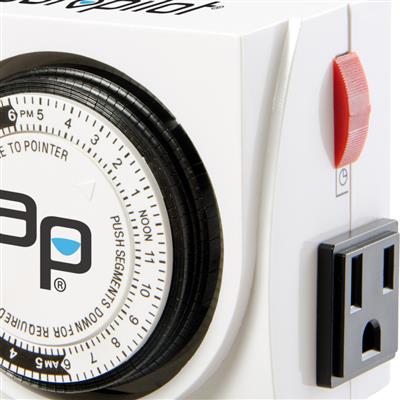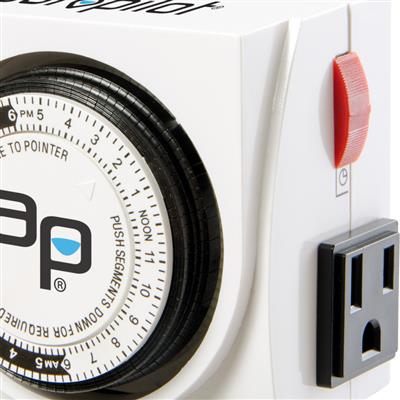This analog timer is an easy way to automate your grow lighting system. Adds convenience and encourages productive growth with consistent hours of light. Can also be used in almost any hydroponic system application.
- 15 minute ON/OFF
- 24 hour cycle
- Controls two outlets simultaneously
- Rated up to 1725 watts at 15 amps




